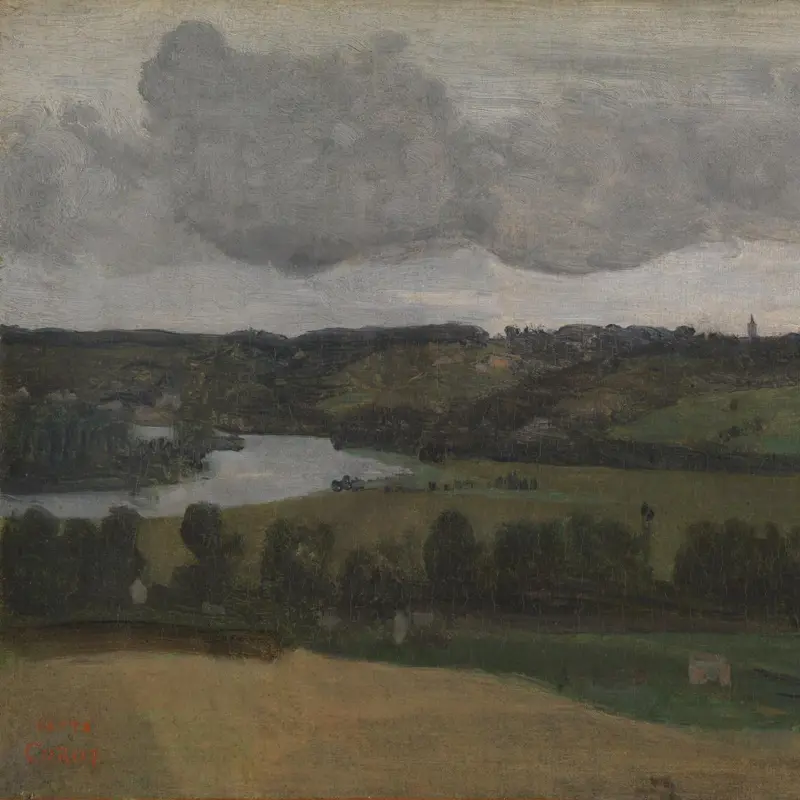Probably by Jean-Baptiste-Camille Corot, 'Staircase in the Villa of Maecenas, Tivoli', about 1826
About the work
Overview
The Villa Maecenas at Tivoli outside Rome was actually the foundations of an ancient temple complex, and was named after the famous patron of the poets Horace and Virgil. This painting is a masterful depiction of successive architectural spaces: first the area to the front of the entrance, then the vault of the staircase itself, and finally the passageway at the top, brilliantly lit by five windows which are echoed by the five slats in the door to the left. In addition to Corot's signature, a more recent hand has added 'Granet'.
Key facts
Details
- Full title
- Staircase in the Entrance to the Villa of Maecenas at Tivoli
- Artist
- Probably by Jean-Baptiste-Camille Corot
- Artist dates
- 1796 - 1875
- Date made
- About 1826
- Medium and support
- Oil on paper laid on canvas
- Dimensions
- 29.7 × 21.5 cm
- Inscription summary
- Signed; Dated
- Acquisition credit
- The Gere Collection, on long-term loan to the National Gallery
- Inventory number
- L814
- Location
- Not on display
- Image copyright
- The Gere Collection, on long-term loan to the National Gallery, © Private collection 2000. Used by permission
- Collection
- Main Collection
About this record
If you know more about this work or have spotted an error, please contact us. Please note that exhibition histories are listed from 2009 onwards. Bibliographies may not be complete; more comprehensive information is available in the National Gallery Library.



























